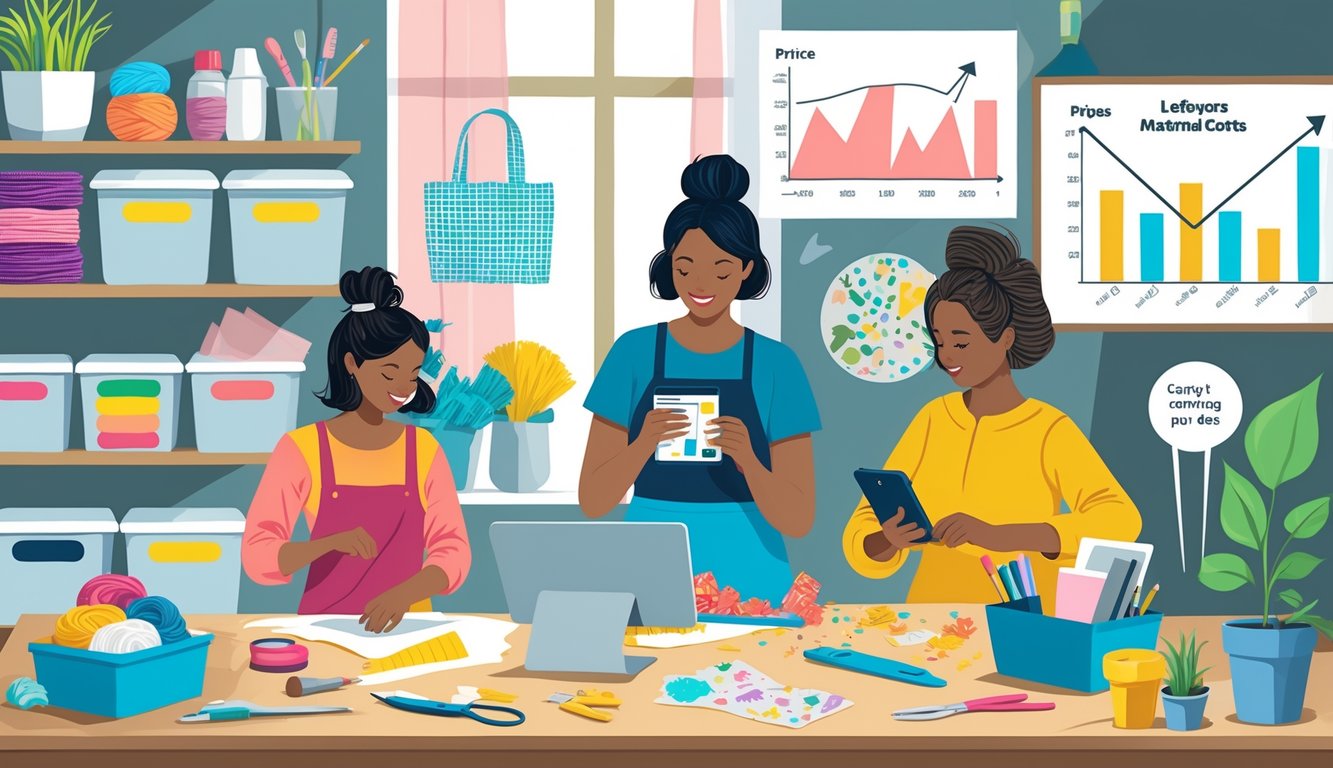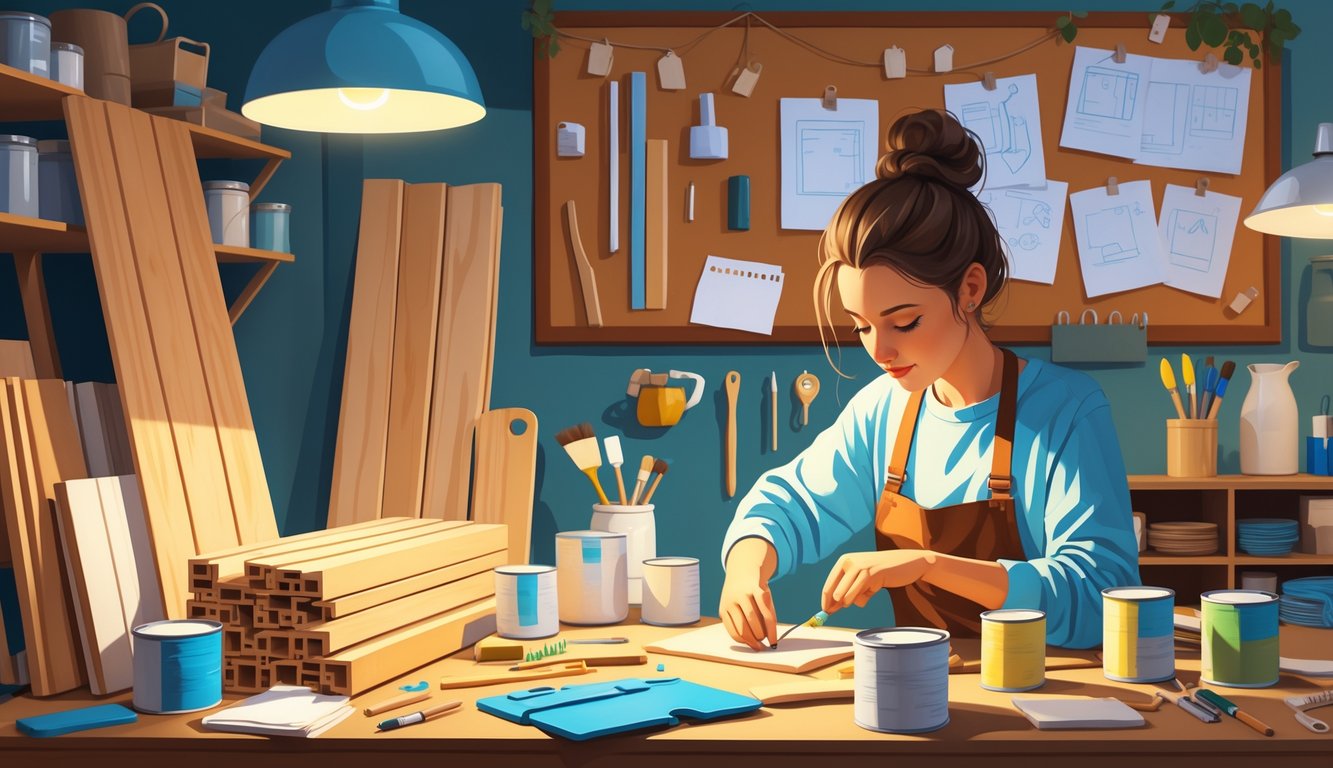
Embracing Recycled and Upcycled Materials
Impulse buying is a disease, honestly, and I relapse every time paper goes up or the yarn aisle gets a new “eco” blend. But grabbing stuff from the trash or the curb? That’s real savings. Thrift store bins are a goldmine, especially when you’re half-distracted and everything is “environmentally discounted.” I found an entire bag of zippers once, no idea what to do with them, but I took them anyway.
Finding Recycled Materials Locally
Dumpster diving’s technically illegal here, but estate sales aren’t, so I always end up with a box of “craftable” something. Textile offcuts from my dry cleaner? Helen gives them to me for brownies, even though my brownies are terrible. Coffee shops give away burlap sacks. Furniture stores toss out so much cardboard it’s criminal. My neighbor’s Amazon habit means I never buy shipping boxes. Free is way more motivating than “sustainable.” Local restaurants let me take jars because the city stopped picking up glass. EPA says we make like 292 million tons of waste a year—no wonder there’s always something to grab. “Free scrap” bins at builder’s yards are a thing, but check for nails unless you want a tetanus shot. Don’t ask how I know.
Creative Upcycling for Unique Projects
Milk cartons? I made bird feeders. The birds are still mad about the glitter. Floppy disks—yes, I still have those—are now pencil holders. Upcycling means nobody can copy your stuff, unless someone else is hoarding 40 cereal boxes just to decoupage a bathroom. Quilters are obsessed with “scrappy” style, and I get it now. I glued bottle caps to a busted frame, called it baroque, and sold it at a craft fair for enough to buy clearance yarn. Penn State says repurposing a pound of fabric offsets 15 pounds of CO2. Is that true? No clue, but I’ll take it. For once, I’m thrifty and eco-heroic. Or just lazy.
DIY Fixtures and Finishes on a Budget

Every time I see “custom” in a listing, I roll my eyes. Who’s got money for that? I’ve made so many shortcuts with glue guns and painter’s tape that my toolbox is basically a graveyard for failed projects.
Repurposing Household Items
Dishtowel as oven mitt—obvious. Old frame as a jewelry tray? Works. Wood crate flipped, knobs screwed in, instant spice rack. My neighbor gave me tile samples; I glued felt on the back and called them coasters. Someone on a forum used Jenga blocks as wall hooks and now I want to try it. Mason jars as bathroom caddies? Tired, but everything else rusts. Family Handyman says use PVC pipe for drill storage, but I painted one gold and now it’s a lamp base. Etsy wants $20 for “vintage risers.” I have a pile, and my kids use one as a phone stand. Nobody cares if it looks fancy.
Affordable Lighting and Hardware Ideas
Smart bulbs? No thanks. I gutted thrift store pendants, slapped in LED strips, and called it a day. Chosen Furniture had this spray-painted wire basket light idea—cost me five bucks and a couple of burns. Old drawer pulls from curb finds? Mismatched, but who cares. I dunked cabinet knobs in black spray paint and now they look “artisan.” There’s no rules. Most of my stuff is held together by paint and stubbornness. Crafters brag about never buying new hardware. I believe them.
Mastering Tutorials for Cost-Effective Projects
People keep asking if tutorials are even worth it when glue sticks cost more than lunch. I don’t know, maybe? Free YouTube guides are usually better than anything I’ve paid for. Saving money on instructions is just as important as saving on supplies.
Sourcing Free and Low-Cost Tutorials
Everyone’s got a favorite blog or YouTube channel now, and I get sucked in for hours, come out with a Pinterest board and nothing to show for it. Once found a “duct tape origami” blog that claimed to cut costs by 30%. I did the math—closer to 8%. Still, it adds up. You have to be picky. Some “free masterclasses” are just ads, but Skillshare promos and Reddit threads actually help. Nita Patel (actual awards, not fake ones) says sort by upvotes, not production value. Facebook groups share off-brand patterns for those of us who refuse to pay $12 for a template. Table of contents are a mess, but keyword search works.
Adapting Instructions for Cheaper Materials
Why do beginner tutorials always assume I have walnut and French linen? I don’t. Most guides aren’t sacred—swap organic wool for acrylic, save cash, ignore the “ethically sourced” guilt trips (Forbes says bamboo is marked up 45% over plain cotton—what?). Contractor glue instead of “craft” glue? Works. Hardware store felt, cereal box stencils instead of $20 mylar—nobody notices. Sometimes the best hacks are buried on page three of Google. “Just use what’s in the garage,” says Karen L., quilter for 27 years. Real savings come from ignoring purists.



